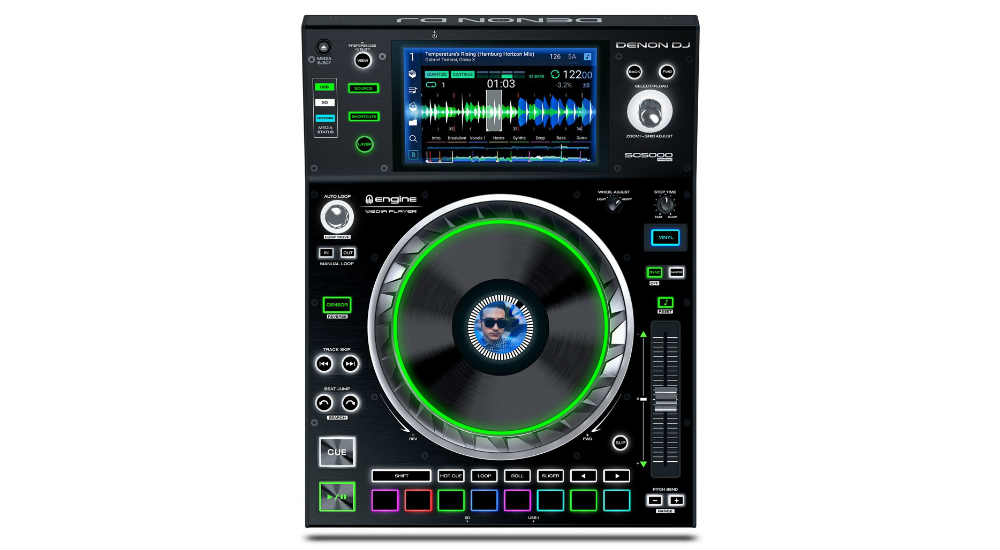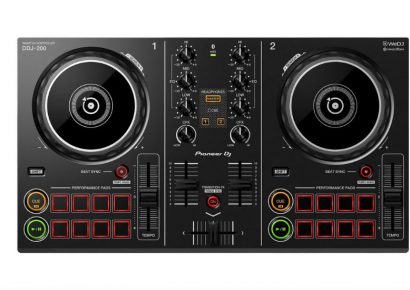The first thing I noticed was the inclusion of performance pads on the unit – usually only seen on DJ controllers, these are a welcome innovation. Although the pads are perhaps a little tightly packed together, practise makes perfect right!?
The screen is 7-inchs in size, multi-touch and responsively quick. It gives access to your crates, playlist/history, prepare list, files and a search function. It’s a similar menu layout to what we’ve seen on the Pioneer Nexus so expect to be able to get into it in a fairly quick and intuitive fashion. The big difference here is the touch screen letting you zoom around menus without having to toggle “back” each time. Because of the multi-core processor, it’s possible to swipe tracks around as you would do on your phone or tablet and that is not only innovative for DJ gear, but it also aligns this product with what we are used to in 2019.
The excellent functionality of the on screen menus includes a waveform zoom for getting right up tight with your beats and cues and the ability to save multi user preferences such as cues, loops and display settings such as the colour of the jog wheel and personalised images within it.
While nothing new to controller DJ’s, the double layer feature means that you have 2 virtual units in one which has the benefit of having 4 player setups with only 2 units, or simply being able to mix with complete functionality (including sync) off a single deck. Saving on space and the almighty dollar – it’s a massive plus in anyone’s book, however I’d have to say it’s a slight adjustment to get used to at first. You’d probably want to have play around with this before attempting to lay it down in a club environment. (Venue owners don’t expect to lay one deck on an unsuspecting DJ this early in the piece without a few disasters). No doubt this function will develop and vastly improve in future software and hardware updates. Ideally in this day and age you’ll sooner have to update your software rather than your hardware.
When paired with X1800 Prime mixer, the Link feature allows for precise sharing of track data between the mixer and the other players and colour coding makes it easy to know which virtual deck is connected to which mixer channel when using the double layer feature. All this is powered by the Engine Prime software used to prepare your tracks. This is the software you ideally use to prepare your tracks and other stuff such as cue points and loops.
Improved vastly over earlier versions, it now supports Serato DJ playlist and the importation of Traktor playlists, which adds to the versatility of the SC5000 Prime player. Engine Prime is actually embedded into the player itself, which makes it possible to plug in media with tracks that have never been analysed by any software and, in real time, detect BPM to set the beatgrid.
The multiple options for I/O give ease for variations on signal flow and allow plenty of flexibility for smooth DJ changes overs. 3 USB inputs, SD slot and Link port should do you fine. Both the console buttons and pitch fader are solid and accurate in their responsiveness and I found the layout clean with the lighting and colours sectioning out the different areas of the deck nicely.
Denon has clearly put a lot of time and thought into making this a true all in one innovation (at least to date), with flexibility, power and at a better price amid a sea of products I’ve found to have nearly everything but not quite.

